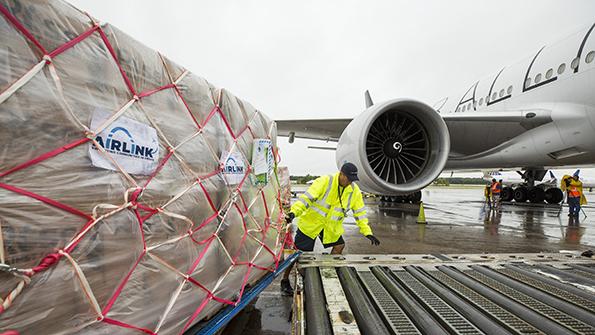Opinion: How Aviation Aids When Disaster Strikes

It is interesting to me that when CO2 emissions are reported, aviation seems to receive an unfair amount of disapprobation, considering its impact is 4.9% of global emissions (CO2 and non-CO2), according to the Climate Action Network and International Coalition for Sustainable Aviation. That is not insignificant, but it is a small part of a bigger story. No conversation about aviation should be complete without consideration of the positive impact it has on humanitarian outcomes caused by both climate change emergencies and complex humanitarian crises. Often the scale of disaster, critical needs and geography makes air the most responsible transportation option—for both material supplies and expert responders.
The science and the industry concur that aviation emissions play a role in global climate change. The industry itself is taking concrete measures to reduce its carbon footprint through investment in alternative fuels, increasingly efficient engines, aircraft and more. These measures will take years to decades to come online, scale and have a net effect on emissions and climate change.
Meanwhile, climate change emergencies continue to impact millions of people. Powerful weather events once confined to defined seasons are now predictably unpredictable. When they occur in countries experiencing war, conflict and poverty, resilience is low, and infrastructures are compromised. Already strained basic services such as healthcare, water, sanitation, shelter and food are stretched beyond limits, exacerbating the need for immediate and increased material aid and expertise from across the region or around the world.
Given all that, and the time lag in implementing new technologies, how can—and does—the industry mitigate near-term impacts of climate change? Studies, including one from Kuehne Logistics University and HELP Logistics, show as much as 73% of humanitarian funding is spent in the supply chain, with transportation representing often the most essential, volatile and costly component. Since 2010, with the founding of Airlink by the International Society of Transport Aircraft Trading, the aviation sector has been collaborating on humanitarian response operations in an innovative way. By removing the barriers nongovernmental organizations (NGO) face due to logistics challenges and the high, volatile costs of transportation after a disaster, Airlink’s 150+ relief partners are able to reach more people and respond to more disasters by leveraging their limited transportation budgets, which often are nonexistent or overspent because of the increasing number of disasters.
Airlink was putting an environmentally responsible lens on use of aviation assets for humanitarian purposes well before “ESG” concerns. Airlink’s approach is working with credible relief organizations, using aviation assets where they are the best option for aid delivery, using existing capacity first, utilizing sea freight or trucking where timing and routes allow, and limiting charter flights to essential large shipments from NGOs when it is the only or best option. By guaranteeing NGOs space on scheduled flights, “air bridges” lead to sustainable delivery options more efficient for all parties. Full aircraft make for environmentally responsible flights.
Airlines are investing resources in helping to address the damage climate change is causing by participating in Airlink’s growing network of 50+ international and regional commercial passenger and cargo airline partners, including United Airlines, American Airlines, Qatar Airways, Virgin Atlantic, Air Canada, Atlas Air, UPS, Amerijet and Turkish Airlines. Through their donations of airlift and accessible capacity during peak periods, these airlines are solving problems caused by the rise in climate change disasters. Environmental efficiency in humanitarian aid transportation and logistics means sending the right aid, at the right time, to the right place—a driving principle for Airlink.
Sixty percent of unsolicited in-kind donations and other inappropriate humanitarian goods are wasted by many estimates, including from the U.N. Office for the Coordination of Humanitarian Affairs, with an unnecessary environmental impact resulting from burn piles, landfills and wasted transportation. These often come from well-intentioned public collection drives for donated items that are not what is needed, do not have distribution recipients and plans, or are available in more local economies. It is why cash donations to NGOs like Airlink and its partners ensure funding for transportation and logistics costs—expenses that regularly exceed donated airlift and are overlooked or underfunded—and distribution plans to beneficiaries.
Airlink’s slogan is: “Step One. Get There.” A 2019 report by the International Civil Aviation Organization stated: “Aviation is by far the world’s safest and most efficient mode of long-range transportation. . . . Air transport functions as an essential service to provide lifeline connections that otherwise would not be available.” I absolutely agree and know that the aviation sector is addressing today’s humanitarian consequences of climate change in the most responsible way that goes beyond its own footprint.
Sandra Walter, director of development for Airlink in Washington, has 35 years of experience developing philanthropic partnerships.
The views expressed are not necessarily those of Aviation Week.




